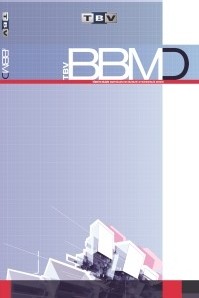Türkçe Dokümanlar İçin N-gram Tabanlı Yeni Bir Sınıflandırma(Ng-ind): Yazar, Tür ve Cinsiyet
___
- 1. Doğan, S., 2006, “Türkçe Dokümanlar için N-gram Tabanlı Sınıflandırma: Yazar, Tür ve Cinsiyet”, Yıldız Teknik Üniv., Master Tezi
- 2. Cavnar, W. B. ve Trenkle, J. M., 1994, “N-gram-based text categorization”, Proceedings of SDAIR-94, 3rd Annual Symposium on Document Analysis and Information Retrieval. Information Systems Project Management, Jolyon E. Hallows, AMACOM Pres
- 3. Peng F., Keselj V., Cerconey N., Thomasy C., 2003, “N-Gram-Based Author Profiles For Authorship Attribution”, Faculty of Computing Science, Dalhousie University, Canada
- 4. Stamatatos E., Fakotakis N., Kokkinakis G., 2000, “Automatic Text Categorization in Terms of Genre and Author”, Computational Linguistics, pp.471-495
- 5. Peng F., Schuurmans D., 2003, “Combining Naive Bayes and N-gram Language Models for Test Classification”, School of Computer Science, University of Waterloo.
- 6. Amasyalı M.F., Diri B., 2006, “Automatic Written Turkish Text Categorization in Terms of Author, Genre and Gender”, 11th International Conference on Applications of Natural Language to Information Systems, Austria
- 7. Peng F., Wang S., Schuurmans D., 2003, “Language and Task Independent Te Categorization with Simple Language Models”, School of Computer Science, University of Waterloo
- 8. Nowson S., Oberlander J., 2006, “Openness and gender in personal weblogs”, School of Informatics, University of Edinburgh, 2 Buccleuch Place, Edinburg, EH89LW
- 9. Dupont P., 2006, “Noisy Sequence Classification with Smoothed Markov Chains”, Department of Computing Science and Engineering (INGI), Université catholique de Louvain Place Sainte Barbe, 2 B-1348 Louvain-la-Neuve – Belgium
- 10. George H., 1995, “Estimating Continuous Distributions in Bayesian Classifiers”, Proceedings of the Eleventh Conference on Uncertainty in Artificial Intelligence, pp. 338-345. Morgan Kaufmann, San Mateo
- 11. Breiman L., 1999, “Random forests– random features”, Technical Report 567, Department of Statistics, University of California, Berkeley
- 12. Peng F., Schuurmans D., 2003, “Combining Naive Bayes and N-gram Language Models for Text Classification”, School of Computer Science, University of Waterloo
- 13. Doyle J., Keselj V., 2005, “Automatic Categorization of Author Gender via NGram Analysis”, In The 6th Symposium on Natural Language Processing, SNLP'2005, Chiang Rai, Thailand, December
- 14. http://sourceforge.net/projects/weka/
- ISSN: 1305-8991
- Başlangıç: 2005
- Yayıncı: Türkiye Bilişim Vakfı
Türkçe Dokümanlar İçin N-gram Tabanlı Yeni Bir Sınıflandırma(Ng-ind): Yazar, Tür ve Cinsiyet
Örüntü Tanıma ve Öznitelik Seçme Yöntemleri Kullanarak Kısa Zaman Sonraki Yol Trafik Hız Öngörüsü
Ülkem Yıldırım, Zehra Çataltepe
Bilgi Güvenliğinde Uygun Risk Analizi ve Yönetimi Yönteminin Seçimi İçin Bir Yaklaşım
F. Özden Aktaş, İbrahim Soğukpınar
Serpiştirim Yaklaşımının MBMS Yükleme Hızına Etkisi
Şirketlerde Elektronik İmza Kullanımı Üzerine Bir Uygulama
Aort Anevrizması Tedavisi için Görüntüsel Modelleme ve Ölçümleme Aracı
Semih Utku, Hulusi Baysal, Mustafa Tosun, R. Alp Kut
Bilgi Güvenliği Yönetiminde Risk Değerlendirmesi İçin Bir Model
Hidayet Takçı, Türker AKYÜZ, Alper UĞUR, Rahim Karabağ, F. Özden AKTAŞ, İbrahim SOĞUKPINAR
